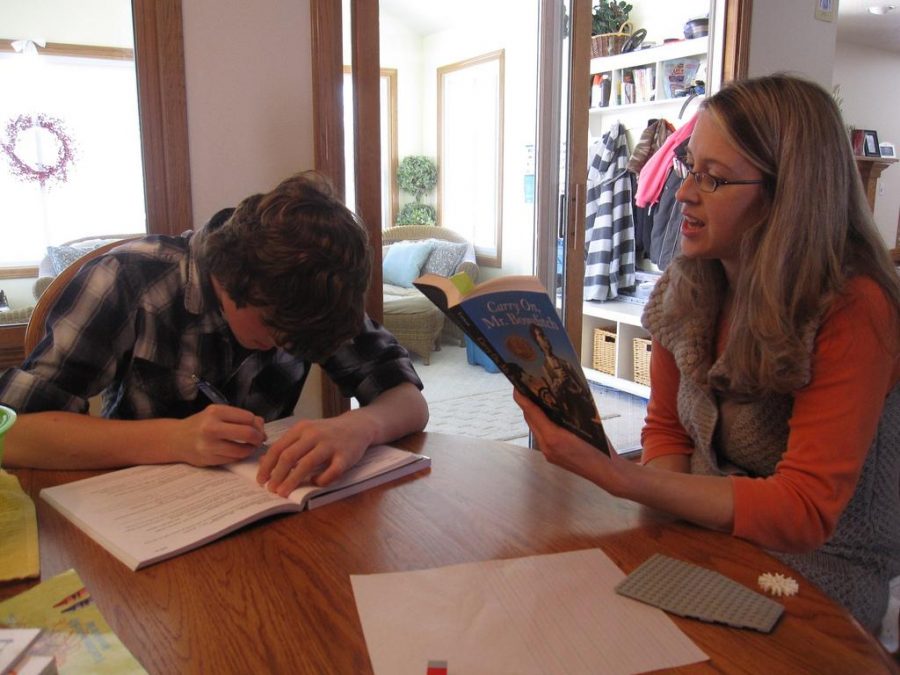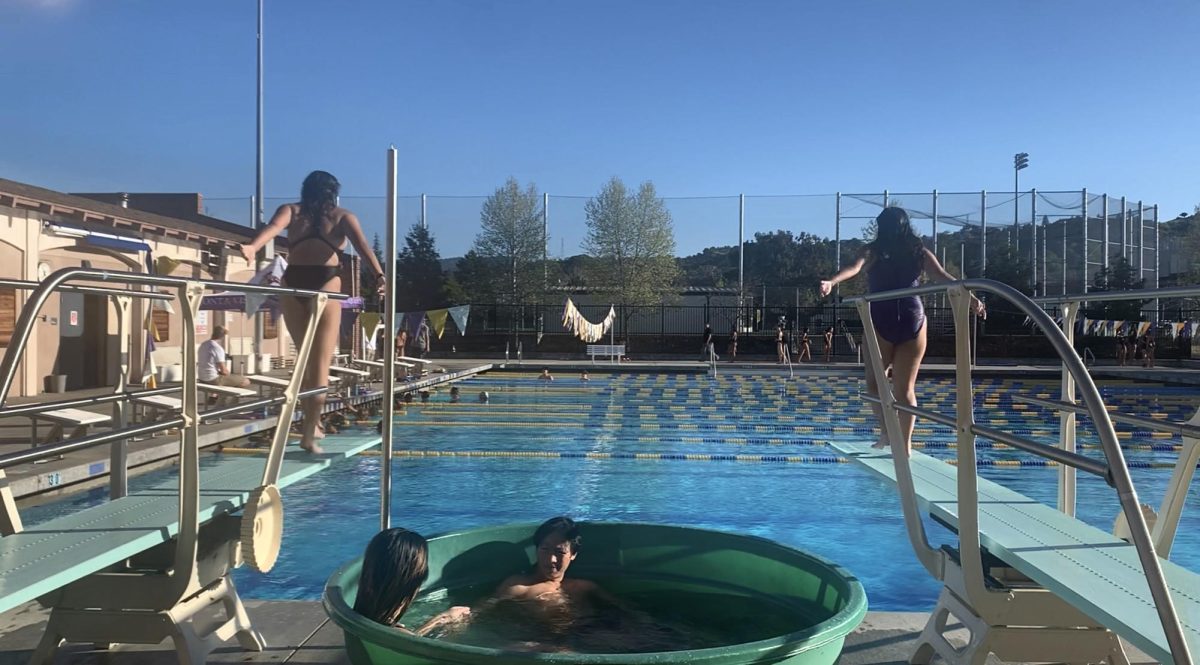Senior Abigail Lee surfs the web whenever she’s bored. She spends much of her free time volunteering and playing the violin and the viola. She reads a lot of classical literature and prides herself on knowing long and complex words that most people don’t know. Although her life shares many elements as that of a typical high school student, she might not have gained such an expansive vocabulary and her love for reading if she had not been homeschooled.
The oldest out of three children, all of which are homeschooled, Lee had been taught how to read at very young age. Since Lee already had a head start compared to other three and four-year-olds, her parents decided to maintain that head start and continue to teach her at a faster pace than others her age were being taught.
The term ‘homeschooled’ conjures up images of a parent or private tutor sitting with their child at the kitchen table or their bedroom for the entire day, surrounded by textbooks. Even though many parents of homeschooled kids are the ones to teach their children the basics of math, reading, and other subjects, they cannot carry their child through their secondary school education. When parents can no longer handle that responsibility, they turn to online classes.
Another common and popular option in the Bay Area is a Co-op, which is essentially a tiny private school that meets a few times every week to allow students to physically interact with others and not through a computer screen. Lee herself, has taken classes at two different Co-ops. Contrary to the stereotype that homeschooled kids sit around at home in their pajamas and do nothing, she frequently takes different classes in order to get the most out of her education. She rarely stays with one institution or does one extracurricular activity for a very long time, and often tries new activities.
Despite how Lee has spent more time at home and in a virtual classroom than the average teenager, participating in Co-ops is an opportunity that some homeschooled students she has met online do not have.
“I knew a lot of homeschoolers who lived in the middle of nowhere, and all they could ever take were online courses,” Lee said. “They were going a little crazy, just staying at home taking these online classes, being in the middle of nowhere with farmland for miles. Some of them had online friends, some of them didn’t, and they were kinda bitter about that.”
Through Co-ops and other connections she has made, Lee has been able to volunteer with many organizations. She has written for a Korean newspaper, taken part in a LEGO Robotics team and has given violin lessons to kids who do not have the money to buy the expensive instrument— experiences that not only gave her the chance to gain new experiences, but also to meet new people.
When Lee tells others that she is homeschooled, she gets mixed responses.
Lee found it hard to socialize when she was in her middle school years. Although she went to church regularly and had joined a speech and debate club, she found that many of the people there were either in public school, or were homeschoolers who grew up together and already knew each other. Though a common assumption is that homeschoolers do not know how to socialize, they have radically different upbringings from one another because unlike public and private schools, there is no standard for the homeschooled household. Lee describes the members of the speech and debate club, who were homeschoolers, as more similar to her image of public school kids: extroverted, talkative, and proactive about making friends. In contrast, Lee was sheltered and had trouble socializing with others.

It wasn’t until Lee began volunteering in high school that she began wanting to socialize more, after realizing how much of an impact she could make on others if she came out of her comfort zone. Socializing gradually became easier for her as she made friends through orchestra, church, and classes she took at a community college.
For Lee, the biggest downside of being homeschooled was that she didn’t have as many opportunities to socialize with people offline when she was younger. Though she did meet people — something many assume homeschoolers do not do — she was not confident enough to talk to them until later on.
Lee’s mother, Peggy, describes Lee as someone who wouldn’t normally approach others and introduce herself, but prefers others to approach her. When Peggy first considered the idea of homeschooling her kids, she also had many questions about social deficiency and the social impact homeschooling would have on Lee and her siblings.
“I think it’s [an] individual [issue], Peggy said. “Not because you go to homeschool or because you’re going to public school… actually, homeschool[ed] kids can be really social, and they can be more easy to talk to. Even if you’re going to [public or private] school, some kids don’t have a social life… some kids are developing, they develop later.”
Both Lee and her mother agree that one of the greatest benefits of homeschooling is how it allows students to reach beyond the confines of a public or private school education and study on their own. A 2016 study states that homeschooled students do better on standardized tests than both public and private school students and have great potential to do well academically. Lee believes that public school is better suited for kids who aren’t all about academics because it allows for a more varied educational experience, including the chance to partake in clubs and sports instead of focusing solely on education. Homeschooling, on the other hand, allows students more freedom to choose the type of education they get, specific subjects they want to study, and when to do what. They are free to grow as individuals, both socially and educationally.
“Some families — they homeschool, they set times, they have to do this [at] this hour and this hour and that’s it,” Peggy said. “But for our family… whatever they like to do, I just let them go on. I don’t like the rigid.”
Many adolescents structure their daily lives around school and it’s difficult to imagine going through life without the experiences that comes with attending school surrounded by classmates of similar ages. Regardless, the amount of homeschooled students in the United States is growing at a steady rate. A study from the National Home Education Research Institute showed that there are approximately 2.3 million homeschooled students and that a home education is growing in popularity. Colleges are accepting more homeschooled students every year, who end up excelling in their studies as a result of being allowed to study hard on their own.
“From what I’ve heard, college courses are also very similar to the homeschool format,” Lee said when asked if she feels prepared for college. ”A lot of it is doing stuff on your own, it’s very self-driven.”
Lee is most looking forward to being around so many new people when she attends college in the fall. Although her educational background is different from many of her fellow students, she feels familiar with the structure of the environment she’s going to be in. For a person like Lee, being independent in a self-driven environment is nothing new.




















